

Speaker: Neil Leach
Monday, December 6th at 1pm PST via Zoom
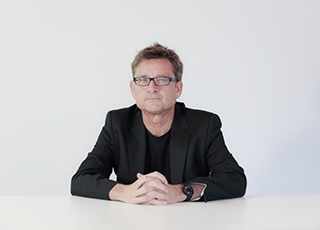
Abstract
"The ideas that are driving AlphaGo are going to drive our future."
- AlphaGo documentary
"AlphaGo showed us that moves humans may have thought are creative were actually conventional."
- Lee Sedol, following match with AlphaGo
"Overnight, China plunged into an artificial intelligence fever. . . AlphaGo was China’s Sputnik moment."
- Kai-Fu Lee
Seldom has a game had such a profound impact on the world. In 2016 a match of Go took place between leading Korean Go player, Lee Sedol, and AlphaGo, an AI program developed by DeepMind of London. Few had expected AlphaGo to beat one of the world’s leading Go players, given the complexity of a board game where there are more potential moves than atoms in the universe. But AlphaGo comfortably beat its human opponent. Moreover, AlphaGo played a series of strategically brilliant moves never seen before. The match transformed the game of Go forever, but its overall impact was felt even more broadly. AlphaGo had demonstrated that AI could outperform human beings at a highly complex challenge, and caused a seismic shock – a wakeup call – for China and Korea, two countries where Go is a national game, prompting both countries to invest heavily in AI research.
How will the ideas behind AlphaGo – and AI in general – transform the discipline of architecture? Learning from AlphaGo draws comparisons between the ideas behind AlphaGo and the startling ways in which AI is already being used to transform the profession: AI is automatically generating novel architectural designs, and outperforming architects in urban planning; AI is controlling our environmental systems and sorting out all our traffic jams; AI is teaching robotic arms to stack bricks and build walls; and clients have even begun to insist on architects using AI to guarantee their return on investment. The AI revolution has already begun.
In 1972 Robert Venturi, Denise Scott Brown and Steve Izenour published Learning from Las Vegas. 50 years later, it is clear that AI is going to transform architecture more radically than Las Vegas ever could. It is now time to learn from AlphaGo.
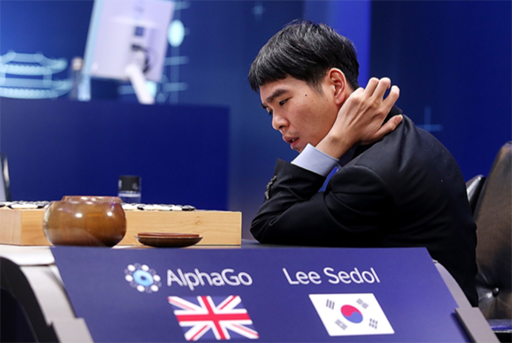
Bio
Neil Leach is a British architect and professor. He currently teaches at FIU, EGS and Tongji, and taught previously at AA, Harvard GSD, Columbia, Cornell and SCI-Arc. He has been a NASA research fellow, developing 3D printing technologies for the Moon and Mars, and is an academician within the Academy of Europe. He has published over 40 books on architecture and digital theory. His books include Rethinking Architecture (Routledge, 1997), Designing for a Digital World (Wiley, 2002); Digital Tectonics (Wiley, 2004); Camouflage (MIT Press, 2006); Digital Cities (Wiley, 2009); Space Architecture (Wiley, 2014); Swarm Intelligence (TongjiUP, 2017); Computational Design (TongjiUP, 2017); Digital Fabrication (TongjiUP, 2017); Architectural Intelligence (Springer, 2020); Material Intelligence (Springer, 2021); Architecture in the Age of Artificial Intelligence (Bloomsbury, 2021) and Machine Hallucinations: Architecture and AI (Wiley, 2022).
For more information about the MAT Seminar Series, go to: seminar.mat.ucsb.edu.
Speaker: Behnaz Farahi
Monday, November 29th at 1pm PST, Elings Hall room 2611 (Experimental Visualization Lab).
Abstract
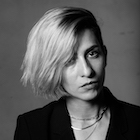
Can computation be critical or will various forms of bias always be found embedded in computational systems? Could surveillance act as a form of resistance? Could materials be imbued with Artificial Intelligence and computer vision in order to address critical issues such as emotion? The goal is to address the possibility of an empathetic relationship between human beings and their environment in order to augment human intelligence and sensory experience of the world and influence social interactions in a critical way. By demonstrating a series of interdisciplinary projects, the attempt is to address provocative research questions through design and critical making, fueled by the latest advances in the world of neuroscience, cognitive philosophy, computational design, artificial intelligence and feminism. From wearables to architecture, these projects demonstrate an application of techniques, such as EEG brain imaging, facial and gaze tracking as well as novel actuator systems, such as smart materials and pneumatics systems.
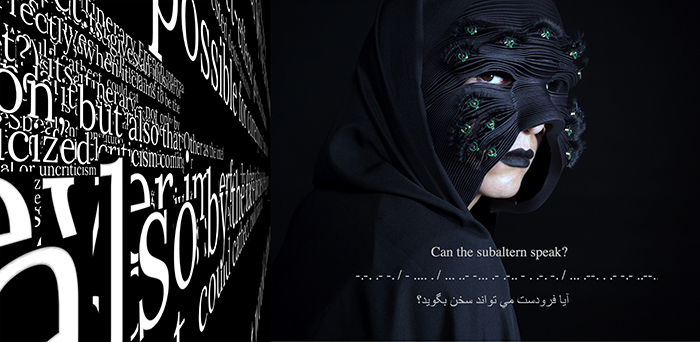
Bio
Trained as an architect, Behnaz Farahi is an award winning designer and critical maker based in Los Angeles. She holds a PhD in Interdisciplinary Media Arts and Practice from USC School of Cinematic Arts. Currently she is an Assistant Professor at the Department of Design, California State University, Long Beach. She explores how to foster an empathetic relationship between the human body and the space around it using computational systems. Her work addresses critical issues such as feminism, emotion, perception and social interaction. Farahi has won several awards including the Cooper Hewitt Smithsonian Design Museum Digital Design Award, Innovation By Design Fast Company Award, World Technology Award. She is a co-editor of an issue of AD, ‘3D Printed Body Architecture’ (2017) and ‘Interactive Futures’ (forthcoming).
For more information about the MAT Seminar Series, go to: seminar.mat.ucsb.edu.
Speaker: Špela Petrič
Monday, November 22nd at 1pm PST via Zoom.
Abstract
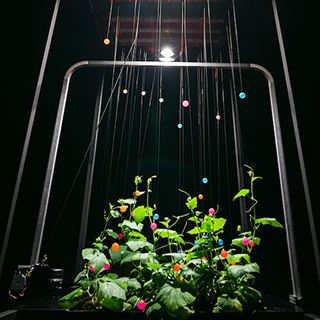
The PLANT-MACHINE is the umbrella title for an art practice and research through which Špela Petrič examines the entwinement of advanced technologies with living bodies, positing horticulture as a model of these relations. By experimenting with ways to appropriate or subvert data acquisition and processing methods, the projects question the current use of algorithms. In the context of the artworks, data becomes the raw material for non-utilitarian, speculative representations of plant life in the sphere of information.
Bio
Špela Petrič is a Ljubljana and Amsterdam based new media artist who has been trained in the natural sciences as well as transmedia arts. Her artistic practice combines technolgoy, wet biomedia practices, and performance. She is currently working as a researcher at the Vrije Universiteit Amsterdam, studying how automation of care manifests in various spheres, from horticulture to human medicine. Petrič received several awards, such as the White Aphroid for outstanding artistic achievement (Slovenia), the Bioart and Design Award (Netherlands), and an Award of Distinction at Prix Ars Electronica (Austria).
For more information about the MAT Seminar Series, go to: seminar.mat.ucsb.edu.
Speaker: Richard Durán
Monday, November 15th at 1pm PT via Zoom.
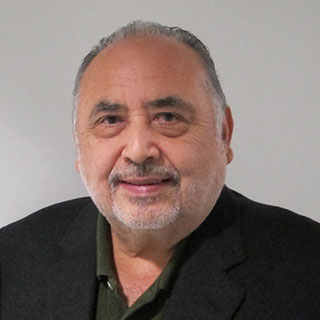
Abstract
Our notions of human learning and cognition in the learning sciences are undergoing sweeping changes as we better grasp the relationships between human’s embodied mental construction and interpretation of everyday reality and its relationship to the material world, society, and culture. I review Chalmer’s notion of extended mind and the notion of situated cognition as examples, with updated concern for how ubiquitous computing design and related technologies have become widespread as resources for edge scientific advances, literacy learning, culture creation, and expression. I call attention to the importance of calling attention of these developments to young people underserved by the education system and society at large.
In light of these concerns, I review efforts to introduce ubiquitous computing into expansive learning activities conducted by immigrant Latinx youths in a maker space at the St. George Youth Center in Isla Vista.
Bio
Richard Durán is a professor in the UCSB Gevirtz Graduate School of Education. His research interests include notions of extended mind and computational thinking from a learning sciences perspective and how we can pursue equity and affirmative development of persons from underserved communities enabled by collaboration and inventive use of technological tools.
For more information about the MAT Seminar Series, go to: seminar.mat.ucsb.edu.
Soft Tectonics is an ongoing research project exploring morphogenesis through computational design, soft material fabrication, and digital audio technologies. The exhibition features SoftVoss (a wearable art sonic skin) and OctoAnemone (an interactive sound sculpture).
https://students.mat.ucsb.edu/yinyu/exhibitions.html
The Glass Box Gallery is the UCSB Art Department’s student-run exhibition space in Building 535 in the Art Department complex.
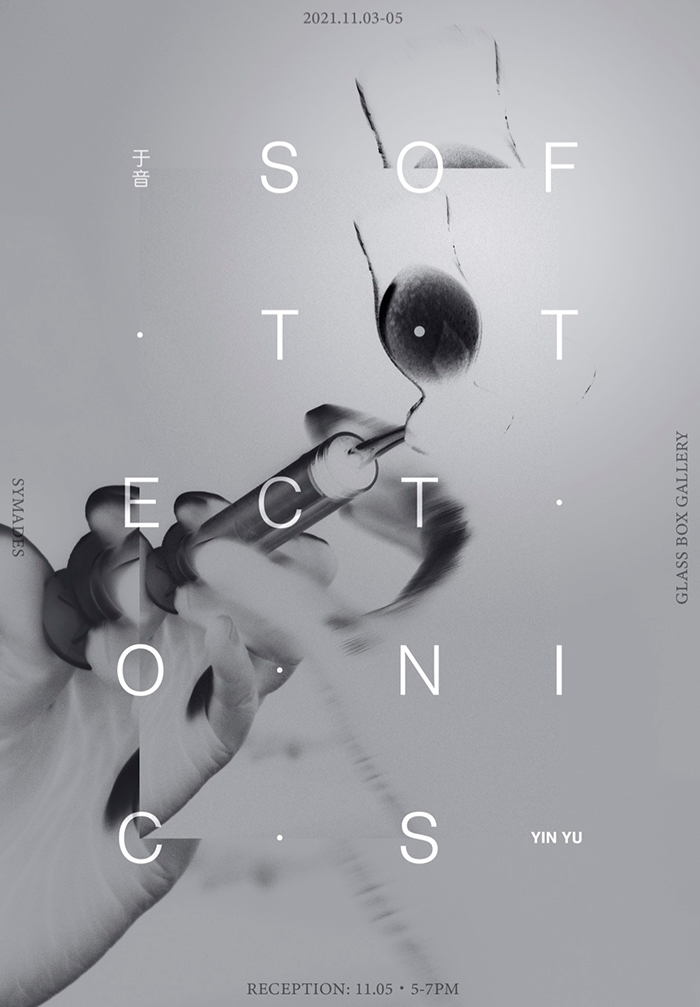
Speaker: James McCartney
Monday, November 8th at 1pm PDT via Zoom.
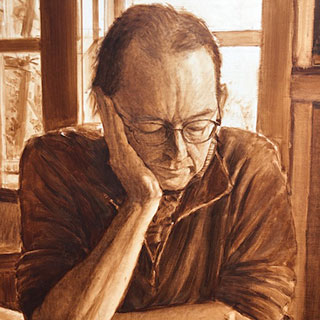
Abstract
I will discuss various projects I have worked on over the last ten years involving user interface, audio synthesis code generation, and language design in pursuit of some long term goals I have for an audio synthesis and music composition system.
Bio
James McCartney studied computer science and electronic music at the University of Texas at Austin. He wrote music for various dance and drama productions in Austin, and later developed the SuperCollider programming language for audio synthesis and algorithmic composition. For a few years he worked on the Hubble Space Telescope project on software for observation planning and data analysis. He worked for 16 years at Apple in the Core Audio group. Now he is retired and pursuing further interests in possibilities for audio synthesis environments.
For more information about the MAT Seminar Series, go to: seminar.mat.ucsb.edu.
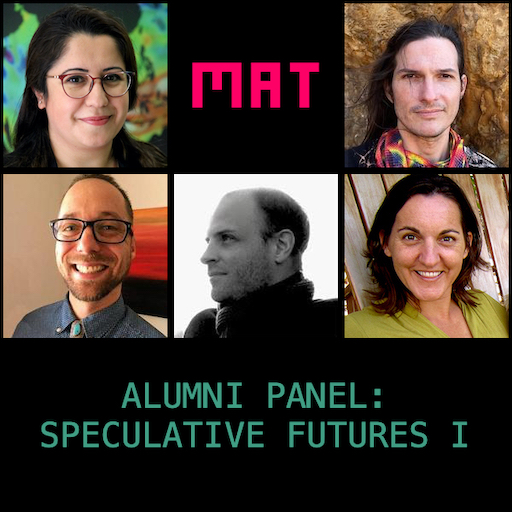
Abstract
Alumni from MAT converse around our special seminar theme of Speculative Futures (description below) and speak to the field, their retrospectives on the MAT program, their post-MAT work, and where they think the future of the field might be moving (and how this might inform MAT and our future approaches). This MAT Alumni Panel is the first in a series of such alumni panels we plan to hold.
Speculative Futures
The future is inherently unknowable, but our present converging crises make for some particularly mysterious seeding conditions. What futures might emerge? What kinds of vectors might be possible from this historical node? The destabilizing events of the new decade have catalyzed global critical reflection about longstanding systems and institutions, with particular focus on mitigating existential threats and social inequalities. The stakes have never been higher, but present volatilities may offer increased flexibility for radical change. During the lockdown, transdisciplinary arts organizations such as Leonardo, S+T+ARTS, and Digital Futures have been hosting international conversations on reimagining the future and the roles that we, as hybrid practitioners, might play in realizing positive change. Relatedly, the practice of speculative design encourages this genre of critical future ideation through artistic praxis itself. As an extension of these efforts and mindsets, the 2021 Fall MAT Seminar Series invites speakers both inside and outside the media arts field to articulate and share their speculative visions, hopes, and designs for the future in this pivotal time. How might such futures shape our field? How might the field change to better guide better futures?
Bios
Basak Alper Ramaswamy. PhD MAT 2013
Basak Alper Ramaswamy works at Jet Propulsion Laboratory NASA. She is a product manager of software tools that are being developed for ground operations of space missions. She applies her skills in user research, data science and visualization to create software tools with a user-centered focus. She received her PhD degree from the UCSB MAT program in 2013. Her research interests spanned information visualization and human-computer interaction topics. She has published in various journals and conferences including ACM SIGCHI, IEEE Transactions on Graphics and Visualization, IEEE InfoVis. She lives in Pasadena CA with her husband and two daughters.
August Black. PhD MAT 2011
August Black is a hybrid practitioner of art, design and engineering. He makes experimental spatial and acoustic situations, often by building his own technological artifacts and instruments in hardware and software. His past work focused on live networked audio, mixing FM radio with user input through online software. His current interests span the fields of the philosophy of technology, software studies, techno-politics, peer-to-peer networking and AI/machine learning. In the past, he’s been a member of arts organizations such as the ORF Kunstradio and the Ars Electronica Futurelab, as well as a former member of the engineering team at Cycling ‘74, makers of Max/MSP. He has shown works at festivals and venues such as Ars Electronica Festival, Dutch Electronic Arts Festival, Wave Farm, Transmediale, Pixelache, LA Freewaves, Piksel Festival, Polar Circuit and the Tasmanian Museum of Art, among others. He earned a BFA at Syracuse University and an MS/PhD at UC Santa Barbara. He currently serves as Assistant Professor of Critical Media Practices at CU Boulder.
Pablo Colapinto. PhD MAT 2016
Enrica Costello, MAT: MA 2002 (+ current PhD Candidate)
Enrica Lovaglio Costello was raised in an Italian hamlet by the Mediterranean sea; her deep-sea diver dad taught her early on the value of knowing “how to build” her “creative projects.” She studied architecture in Genova (Italy), urban design in Lyon (France), and Media Arts and Technology in Santa Barbara (U.S.A.). Enrica is a Full Professor in the Art and Design department at Cal Poly. In the last two decades, her main interests have included immersive and interactive narratives and cross-disciplinary and cross-cultural explorations through advanced technology. More recently, her research focus has been defining new methodologies to reduce discriminatory bias. Today, she is exploring if collaborations between academia and juvenile correctional systems in designing narratives and experiencing them in VR can be an empirical, evidence-based pedagogical method to increase diversity and inclusion inside American universities.
For more information about the MAT Seminar Series, go to: seminar.mat.ucsb.edu.
Speaker: João Pedro Oliveira
Monday, October 18th, 2021 at 1pm. Experimental Visualization Lab, room 2611, Elings Hall.
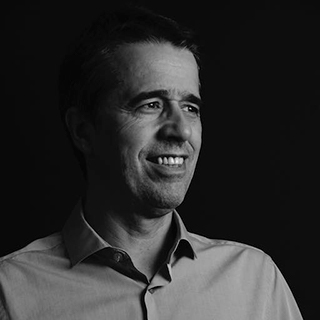
This presentation analyses several possibilities of interaction between image movement and sound, under the perspective of gestural and textural relations. Departing from theorists such as Hatten, Smalley, Wishart and Chion, who analyzed the idea of gesture and texture in music, we present several examples from the cinema repertoire (Hitchcock, Lawrence, Kubrick, Reggio, Tarkovski), as well as some author's experimental videos, where specific gestures in the image interrelate with sound/music gestures, in ways that can have multiple meanings, or go beyond the direct translation of one into the other. Gesture will be analysed structurally related to its energetic potential, emotion induction, movement and meaning/metaphor. Other concepts such as causality, energy-motion-trajectory, articulation of a continuum, hierarchical levels and disturbances, analysed by the above-mentioned authors will also be applied to the sound-image relation.
Bio
Composer João Pedro Oliveira holds the Corwin Endowed Chair in Composition for the University of California at Santa Barbara. He studied organ performance, composition and architecture in Lisbon. He completed a PhD in Music at the University of New York at Stony Brook. His music includes opera, orchestral compositions, chamber music, electroacoustic music and experimental video. He has received over 70 international prizes and awards for his works, including three Prizes at Bourges Electroacoustic Music Competition, the prestigious Magisterium Prize and Giga-Hertz Special Award, 1st Prize in Metamorphoses competition, 1st Prize in Yamaha-Visiones Sonoras Competition, 1st Prize in Musica Nova competition. He taught at Aveiro University (Portugal) and Federal University of Minas Gerais (Brazil). His publications include several articles in journals and a book on 20th century music theory.
For more information about the MAT Seminar Series, go to: seminar.mat.ucsb.edu.
Speaker: Douglas Kahn
Monday, October 11th, 2021 at 9pm PDT via Zoom
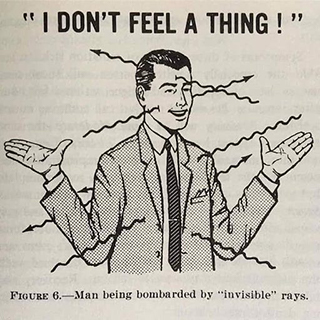
Rethinking the cultural dynamics of recent physiology is a means to perceive a new sense, one of two in the eye, one suited to the political conditions of energy. Appealing to mythological and scientific sites of Reverse Icarus, Perdixian technology, Platonic coalescence, the classical elements, and the Holy Trinity of matter-energy-information, this talk focuses on two blues that are not thought to be seen, one in the sky, one in the retina. One occurs in the early days of quantum physics apparent in art and science in European cultural theory; the other grows in significance now that seasons no longer synch with the circadian.
Bio
Douglas Kahn is author of Earth Sound Earth Signal: Energies and Earth Magnitude in the Arts and Noise Water Meat: A History of Sound in the Arts, editor of Energies in the Arts, among other books in histories of the arts, experimental music, and computation in the arts. He is Honorary Professor at Sydney College of the Arts, University of Sydney, and Professor Emeritus at University of California at Davis, and University of New South Wales.
www.unsw.edu.au/staff/douglas-kahn
For more information about the MAT Seminar Series, go to: seminar.mat.ucsb.edu.
Speaker: Joost Rekveld
Monday, October 4th, 2021 at 1pm PDT via Zoom
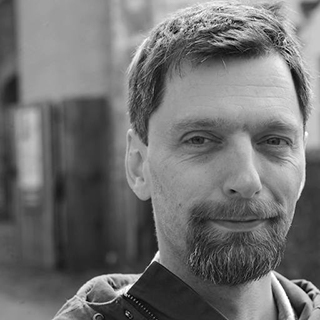
This long-running research project started as an attempt to deal with an ancient question: how can we learn something we don't already know ? As a possible answer, Joost Rekveld has been exploring the idea that new things can be learned in interaction with devices outside of us. By focusing on the agency of technological artefacts in speculation and creation, his project hopes to contribute to a reflection on technology as something else than a tool to subjugate our planet and ourselves.
Practical work focused on the room full of historic and recent analog computers that has been Rekveld's studio for the past few years. Rekveld has been making artistic works nourished by a form of media-archeology that serves two purposes that are almost opposed; one the one hand seeking to illuminate aspects of current practices by going back to their origins, on the other hand looking at the past as a rich and relatively accessible source of difference. Analog computing is an interesting study case since it is the historical origin of computing as a form of interactive exploration, and because interaction with analog computers is non-symbolical: they are not programmed using code but by adjusting material configurations.
In his presentation, Joost Rekveld will talk about his recent work with analog computers and discuss the roots of still embryonic plans involving evolvable hardware.
Bio
Joost Rekveld explores the sensory consequences of systems of his own design, often inspired by forgotten corners in the history of science and technology. He combines temporary dogma’s in the form of procedures or code with open-ended elements such as material processes or networks of interactions that are too complex to predict. His films, installations and performances are composed documentaries of the worlds opened by such systems. In their sensuality they are an attempt to reach an intimate and embodied understanding of our technological world.
His abstract films have been shown world-wide in a wide range of festivals and venues for experimental film, animation or other kinds of moving image. He had retrospectives at the Barbican in London, Redcat in LA, and the Ann Arbor film festival amongst others, and in 2017 he was filmmaker in focus at the International Film Festival Rotterdam. Individual films were screened at hundreds of venues, including the ICA and the Tate Modern in London, The Centre Pompidou in Paris and the Moderna Museet in Stockholm. His film “#11, Marey <-> Moire” was the first Dutch film ever to be shown at the Sundance Film Festival.
He has realized several installations and was involved in many collaborative projects involving composers, music ensembles, theatre companies, dance companies and artist’s labs. He has been giving lectures since 1993, has been teaching since 1996, and from 2008 to 2014 he was the course director of the ArtScience Interfaculty of the Royal Conservatoire and the Royal Academy of Art in The Hague. Since 2017, Joost has been affiliated to the School of Arts, University College Ghent (Belgium) as an artistic researcher.
For more information about the MAT Seminar Series, go to: seminar.mat.ucsb.edu.
Tuesday, September 14th, 2021
11am PDT via Zoom
Abstract
Composers have used recorded sound as compositional material since the birth of musique concrete in the 1940s. While advances in technology have enabled composers to generate and collect large archives of recorded sound, tools and workflows for accessing archives of sound have remained largely unchanged. Composing with large archives of recordings often requires managing and searching through large quantities of audio data, which requires extensive time and labor on the part of the composer. I analyzed related works and data collected from formative interviews with composers to design and implement a new system that supports archive exploration, audition, and composition. SoundPalette is a plug-in device for Ableton Live that enables composers to explore their archive of recorded sound using perceptually relevant audio descriptor dimensions. SoundPalette facilitates content-based search and maps resulting sound object playback to MIDI input. To evaluate SoundPalette, I conducted a weeklong study with two expert composers who used the system to create a series of short musical sketches that leveraged material from their archive. The results of the evaluation indicate that computational systems for audio archive exploration and composition can help composers discover material in their archive, gather material before composition, and integrate these workflows directly into the process of composition.
Friday, June 25th, 2021
3pm PDT via Zoom
Abstract
Virtual Reality (VR) systems have surged in popularity over the last decade, with many different types of devices being utilized to create immersive virtual environments (IVE). One of the key functionalities of an IVE is to induce presence, the sense of "being there", from the user. This is dependent on how the system can manipulate our perception of spatial layout, which involves neurobiological processes of constructing a neural map of the nearby space within our reach, called the peripersonal space. This dissertation aims to understand what presence is, how our brain perceives space, and the importance of peripersonal space in generating presence. Using various iterations of projection-based VR system setups as examples of how to utilize this knowledge, this dissertation will provide insight on how to effectively set up projection-based VR systems with limited resources.
Thursday, June 24th, 2021
3:30pm PDT via Zoom
Abstract
In the practice of media arts, which resides at the intersection of art, engineering and science, seamless communication between disciplines is crucial to creating work that can make an impact in all three areas. The need for a language that enables effective communication between artists, scientists and engineers becomes more prominent as experts from each field strive to push boundaries in their research. In this master’s project, I propose several approaches utilizing abstract representations afforded by interactive visualizations to translate between discipline specific languages, creating works that are understood and valued by researchers in fields ranging from arts and humanities to engineering and data science. I will introduce two case studies in support of each of the proposed approaches, demonstrating their translating effect in both interactive art and data visualization.
Speaker: Sasha Samochina
Friday, May 28th, 2021 at 1pm via Zoom
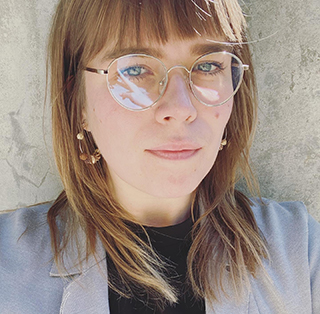
The lecture will explore how creative and immersive technologies transform the way scientists, engineers, and astronauts are studying our solar system and beyond. We will focus on the history of robotic exploration at NASA Jet Propulsion Laboratory and connect that history to the evolution of immersive technologies. Sasha will expand upon the newest research in XR for both science and engineering at NASA-JPL and how this work relates to the current state of our world.
Bio
Sasha Samochina (sam-ocean-uh) is an award-winning creative technologist. She joined the team at NASA Jet Propulsion Laboratory after working in New York in video and web development and in Chicago, where she was a Media Producer at The Field Museum of Natural History. After dreaming up content for JPL’s Communications department, she began to explore the world of 360 videos and Cross Reality (XR). Through Sasha’s visualization skills, she pioneered the first-ever 360° video release on NASA's social media. Currently, she manages the Data Visualization & Infusion Group (174C) and is the Project Lead for JPL’s ProtoSpace software. Sasha dedicated herself to creating software that incorporates innovative forms of visualization that aid scientists, engineers, and astronauts in transforming their workflow. She leverages that same experiential technology to educate and inspire the public to engage in STEAM. She loves all things digital, animal, sound-emitting, cosmic, and views the world through XR-colored glasses.
For more information about the MAT Seminar Series, go to: seminar.mat.ucsb.edu.
Speaker: Guy Ben-Ary
Monday, May 17th, 2021 at 7pm PDT via Zoom
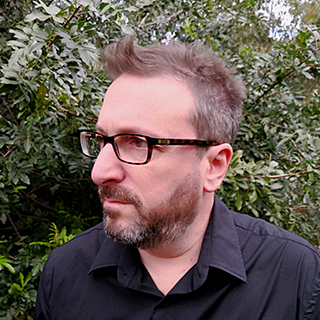
"...I envision a future ‘post-corporeal’ connection between body, instrument, space and time where creative production tools cease to be divorced from the biological body, instead artist and artwork are one in the same. The complexities and nuances that these ‘prepared’ living entities can embody will give rise to a new kind of performative entity, an entity physically removed from the human but linked through lab-based processes in which biopsied material grown outside of the donor’s body (in vitro) control a creative, hybridised entity or specifically, an - in-vitro Intelligence driven Surrogate Performer..." In this presentation, I hope to propose two new concepts: ‘in-vitro Intelligence’ and ‘Surrogate Performer’ that I believe are essential for the discussion about my recent projects: Revivification, Bricolage and cellF and describe some of the methodologies and theories that underpin my artistic practice with some preliminary discussion of terminology, ethics and robotic embodiment as an artistic strategy.
Bio
Guy Ben-Ary, is an award winning Perth based artist and researcher. He currently works at SymbioticA, an artistic laboratory dedicated to the research, learning and hands-on engagement with the life sciences, which is located within the University of Western Australia. Recognised internationally as a major artist and innovator working across science and media arts, Guy specialises in biotechnological artwork, which aims to enrich our understanding of what it means to be alive. Guy’s work has been shown across the globe at prestigious venues and festivals such as the Beijing National Art Museum, MoMa, MONA, San Paulo Biennale, Moscow Biennale, ARS Electrona and more. His work can also be seen in the permanent collection of the Museum of Modern Art in New York. His work Bricolage won an award of excellence in the Japan media art festival, cellF & Silent Barrage were awarded an Honorary Mention in Prix Ars Electronica (2017, 2009) and Silent Barrage also won first prize at VIDA, a significant international competition for Art and Artificial Life. Interested in how art has the potential to initiate public debate on the challenges arising from the existence of these liminal lives, Ben-Ary creates artworks designed to problematise current and emergent bio-technologies’ influence on the shifting forces that govern and determine life, death and sentience.
For more information about the MAT Seminar Series, go to: seminar.mat.ucsb.edu.
Speaker: Jasmina Cibic
Monday, May 10th, 2021 at 1pm via Zoom
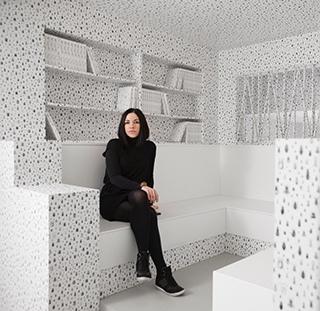
Jasmina Cibic will present her talk "On Ornamental Rashes of Ideology", where she will focus on her research and exhibition projects that delved into the co-relation of contagion of ideology and how it spread via the aid of scenographic (state endorsed) spectacle. Jasmina is a London based artist who works in performance, installation and film, employing a range of activity, media and theatrical tactics to redefine or reconsider a specific ideological formation and its framing devices such as art and architecture. Her work draws a parallel between the construction of national culture and its use value for political aims, addressing the timelessness of psychological and soft power mechanisms that authoritarian structures utilise in their own reinsertion and reinvention.
Bio
Jasmina Cibic represented Slovenia at the 55th Venice Biennial with her project “For Our Economy and Culture”. Her recent exhibitions include solo shows at: Museum of Contemporary Art Ljubljana, CCA Glasgow, Phi Foundation Montreal, BALTIC Centre for Contemporary Art Gateshead, Kunstmuseen Krefeld, Aarhus 2017, Esker Foundation Calgary, Museum of Contemporary Art Zagreb, Museum of Contemporary Art Belgrade, MGLC Ljubljana and Ludwig Museum Budapest along with group exhibitions at Steirischer Herbst ‘19, MOMA NY, MUMA Monash Museum, CCS BARD and Guangdong Museum of Art China. Cibic’s films have been screened at Whitechapel Gallery, CCA Montreal, Pula Film Festival, HKW Berlin, Louvre, Les Rencontres Internationales Paris, Dokfest Kassel and Copenhagen International Documentary Festival. Cibic has been shortlisted for the Jarman Award (2018) and was the winner of the MAC International Ulster Bank and Charlottenborg Fonden awards (2016) and B3 Biennial of the Moving Image Award (2020). Her upcoming solo shows include macLyon, Museum Sztuki Lodz and the Museum der Moderne Salzburg.
For more information about the MAT Seminar Series, go to: seminar.mat.ucsb.edu.
Speaker: Michael Candy
Monday, May 3rd, 2021 at 7pm via Zoom
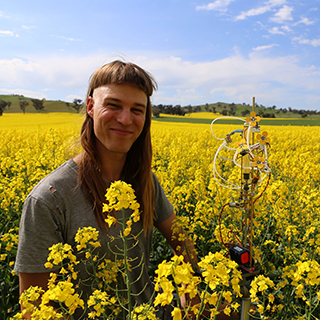
A biographical presentation of Michael Candy's practice as he attempts to brute-force an understanding of technology.
Bio
Michael Candy works with a vocabulary of robotics, hardware hacking, intervention and video. This didactic practice seeks to mediate the liminal realm that technology oppresses on the physical world. His installations and projects often emerge as social experiments or ecological interventions in public space.
Candy has been involved in many international and local projects and exhibitions, notably: Water, (GOMA, Brisbane), Adelaide Biennial of Australian Art, (AGSA, Adelaide), Ars Electronica Festival, (Linz, Austria), The Kathmandu Triennale (Kathmandu,Nepal), The Forum of Sensory Motion (Athens, Greece), The Instrument Builders Project + Hackteria Lab (Yogyakarta, Indonesia) and Hawapi (Huepetuhe,Peru).
For more information about the MAT Seminar Series, go to: seminar.mat.ucsb.edu.
DigitalFUTURES Talk: New Media Architectures
A Vision for Change in the Arts, Design and Sciences
"New Media Architecture(s), or NMA, are the flows, shapes, and spaces as information that redefine our world. NMA spaces can be qualified by a formalization of space and time, while also quantified by computational models that attempt to synthetically mimic complex systems behaviors, manmade or natural. This panel explores the conceptual implications of a new vision for change in contemporary research practice combining the Arts and Sciences."
The panel includes MAT alumni Dr. Haru Ji, Dr. Graham Wakefield, Dr. Şölen Kiratli, and Dr. Hannah Wolfe, and current MAT PhD student Weidi Zhang.
The event is moderated by Dr. Gustavo Rincon (MAT alumni, UCSB Allosphere Research Group), and Danielle Siembieda (Leonardo, ISAST).
Live streaming at www.youtube.com/c/digitalfuturesworld/live and live.bilibili.com/22290623.
Event website: www.digitalfutures.world
Speaker: Mirela Alistar
Monday, April 26th, 2021 at 1pm via Zoom
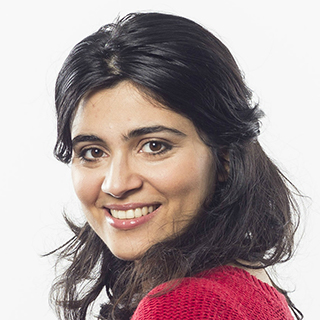
Can a non-human organism carry and pass on the nostalgic memory of a human being? Could we create hybrid creatures in the lab in order to improve our understanding of the complex relationship between humans and other organisms?
I am driven by the constant inner desire to discover my humanity through the perspective of the non-human beings around me. For that, I shamelessly use advanced techniques in biotechnology, computing and engineering, not to make an award-winning discovery, but to discover myself.
I will talk about how I express myself through some of my work, ranging from developing microfluidic biochips for personalized healthcare to Semina Aeternitatis created with Margerita Pevere - an art piece that takes a hybrid approach on immortality, by entwining human memories with bacterial inheritance.
Bio
Mirela (assistant professor, ATLAS Institute, Computer Science) investigates the extent to which we can change healthcare to make it a personal process. Her research focuses around microfluidic biochips, devices that enable direct interaction of humans with their microbiome for diagnosis purposes. Mirela is an active contributor to the DIYBio movement, having led and co-founded community wetlabs. In this context, she organizes interactive performances, art installations and open workshops, in order to engage the public in direct interaction with living materials (e.g., bacteria, viruses, fungi). Mirela received her PhD from the Technical University of Denmark in 2014, and until 2018, she was a postdoc in Patrick Baudish's lab at Hasso Plattner Institute in Germany. Since 2019, she leads the Living Matter Lab at CU Boulder.
www.instagram.com/livingmatterlab
For more information about the MAT Seminar Series, go to: seminar.mat.ucsb.edu.
Speaker: Dr. Roger F. Malina
Monday, April 19th, 2021 at 1pm via Zoom
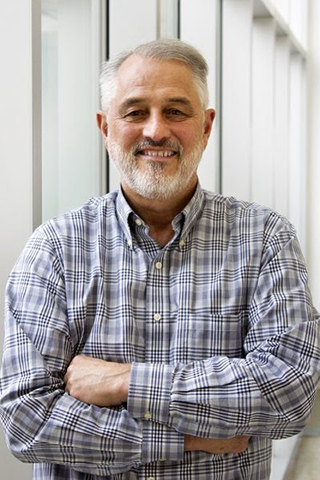
There is much international discussion and interest in how to combine the arts, sciences and new technologies to address certain research agendas. An exemplar is the European Union STARTS program which funds across the three disciplines. Perhaps we need to rethink along the lines of Dr. Sarabeth Berk's "More than my Title". She calls herself "Creative Disruptor" because she blends her expertise as an artist/researcher/educator/designer.
Roger Malina has a PhD in Astrophysics and a PhD in Art, and has extensive experience in academic publishing and teaches cross disciplinary courses.
He will discuss, through the use of 'exemplars' , emerging international trends in areas from AI research, astrophysics, bioart to business. He will try to focus on the heterogeneous perspectives of todays graduate students and will solicit interventions from members of the seminar.
Bio
Roger Malina is a physicist, astronomer and Executive Editor of the Leonardo publications at MIT Press. With dual appointments as Professor of Arts and Technology and Professor of Physics at UT Dallas, his work focuses on connections among the natural sciences and arts, design and humanities.
Malina is the former Director of the Observatoire Astronomique de Marseille Provence (OAMP) in Marseille and was a member of its observational cosmology group which collaborated on investigations regarding the nature of dark matter and dark energy. He has been a member of the Mediterranean Institute for Advanced Study (Institut Méditerranéen de Recherches Avancées, IMERA), that contributes to trans-disciplinarity between the sciences and the arts and places emphasis on the human dimensions of the sciences.
With a specialty in space instrumentation, Malina was the principal investigator for the NASA Extreme Ultraviolet Explorer Satellite at the University of California, Berkeley. He also founded the Leonardo organizations in San Francisco and Paris, whose missions are to promote work that explores the intersection of the arts, sciences, and new technologies.
Malina received an Honorary Doctorate from the Polytechnic University of Valencia Spain, holds a BS in Physics from the Massachusetts Institute of Technology and a PhD in Astronomy from the University of California, Berkeley.
For more information about the MAT Seminar Series, go to: seminar.mat.ucsb.edu.
Tuesday, April 13th, 2021
3:30pm PDT via Zoom
Abstract
Physical metaphor provides a visceral and universal logical framework for composing musical gestures. Physical simulations can aid the composer to create musical gestures based in complex physical metaphors. CHON (Coupled Harmonic Oscillator Network) is a cross-platform application for simulating mass-spring networks and sonifying the motion of individual particles. CHON is an interactive instrument that can provide complex, yet tangible and physically based, control data for synthesis, sound processing, and musical score generation. This system builds on the idea of the traditional LFO by coupling the movement of multiple control signals using physical principles.
CHON by Rodney Duplessis
Speaker: Erich Berger
Monday, April 12th, 2021 at 1pm via Zoom.
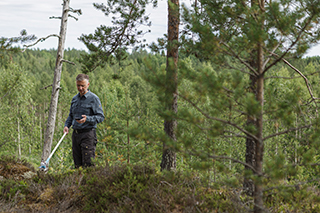
Deep time is understood as the concept behind geological time: the history of the earth from its beginnings as a molten ball of matter until the present. Deep futures do not yet exist, they are a thought vehicle to speculate within the probability space of a future earth. The realization that anthropogenic impact is leading to transformations of the earth system which follow through into deep futures is not only discussed within the sciences. The Anthropocene and with it a strong interest directed towards deep time and matters of geology surface increasingly within artistic practices. At its core artists look at the origins and consequences of human impact and speculate about deep futures. Berger’s own interest, manifested in his artistic work, is to investigate the dichotomy between human time perception and the time in biological, environmental, and geological processes which we as humans are part of. This dichotomy arises from the present as we as individuals are challenged to change our way of life and to contribute to endeavours and measures to secure a future for humans beyond our lifetime.
Bio
Erich Berger is an artist, curator and cultural worker based in Helsinki Finland. His focus is on the intersection of art, science and technology with a critical take on how they transform society and the world at large. Throughout his practice he has explored the materiality of information, and information and technology as artistic material.
Berger's current interest in issues of deep time and hybrid ecology led him to work with geological processes, radiogenic phenomena and their socio-political implications in the here and now. He moves between visual arts and science in an area which he also investigates and develops as director of the Bioart Society in Helsinki which was awarded the Finnish State Prize for multidisciplinary art in 2017. His installations, performances and interfaces are exhibited widely and Berger received awards from renowned institutions such as Prix Ars Electronica (AT), ZKM (DE), Vida Telefonica (ES), Files Prix (BR) and Arts at CERN (CH).
For more information about the MAT Seminar Series, go to: seminar.mat.ucsb.edu.
Speaker: Dmitry Morozov
Monday, April 5th, 2021 at 1pm via Zoom.
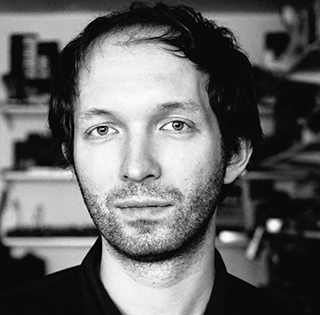
Dmitry Morozov aka ::vtol:: in his lecture "Atypical mechatronics" will talk about the work of a media artist at the intersection of new technologies and contemporary art. Taking into account the specifics of the genre, media artists comprehend modern technologies from an artistic point of view, studying various fields and directions, such as sound art, robotics, interactive objects that serve as inspiration and become the basis for their works.
Dmitry defines the art objects created by him as autonomous systems with interactive elements. Many of the objects involve a sequential elaboration of concepts in order to create the "myths" behind each work. Explores the themes of chaos and self-organization of systems, analyzing social, biological, physical phenomena. In his works, he constantly refers to the concepts of "Deep Media" and "Media Archeology".
Bio
Dmitry Morozov aka ::vtol:: (b.1986, Moscow) is a transdisciplinary artist and researcher. He focuses on contemporary media arts including sound, robotics and installation, placing special emphasis on the link between emergent systems and new kinds of technological synthesis.
His works have been exhibited at museums and galleries worldwide, including the NCCA, MMOMA, Garage Museum of Contemporary Art, Tretyakov State Gallery, Electromuseum, Laboratoria Art&Science Space (Moscow), Laznia Center for Contemporary Arts (Gdansk), ZKM Zentrum (Karlsruhe), Boulder Museum of Contemporary Art (Boulder), National Taiwan Museum of Fine Arts (Taichung), Kapelica gallery (Ljubljana), ArtScience Museum (Singapore) etc., in 4th MBCA (Moscow), SIGGRAPH 2016 (Anaheim) and in festivals such as Mirage (Lyon), Ars Electronica (Linz), Future Everything (Manchester) and CTM (Berlin).
He is the award winner of the Sergei Kuryokhin Prize (Russia, 2013 and 2020), Prix Cube (France, 2014) and also received honorary mentions at VIDA 16.0 (Spain, 2014) and Prix Ars Electronica (Austria, 2015, 2017).
For more information about the MAT Seminar Series, go to: seminar.mat.ucsb.edu.
Thursday, March 11th, 2021
1pm PST via Zoom
Abstract
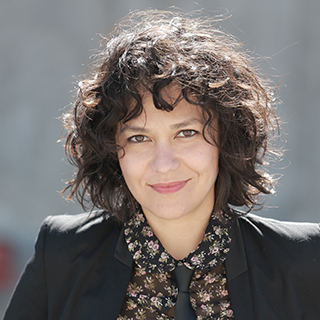
This dissertation explores the ways in which media artworks depict agency and convey life-like qualities. This exploration is centered around the design and implementation of two interactive media artworks, HIVE (2016-2018) and Cacophonic Choir (2019-current), and makes use of a novel conceptual framework grounded in an approach to media arts practice that uses the notion of agency as a lens for examining and creating artworks. Starting with an inquiry into novel agent-based art practices that neither feature robotic nor virtual agents, the dissertation reevaluates the notion of agency in artistic contexts in light of the relatively recent establishment of sonic interaction design as a field in its own right and the renewed emphasis on materiality as the result of rapidly evolving digital design and fabrication technologies. To this end, I introduce Sonically Actuated Morphological Agent practice as an area of artistic practice that fuses digitally designed and fabricated artifacts, sonic expressions, and interactive behaviors in order to create ‘perceived’ life-like systems. In summary, this dissertation aims to expand upon the theoretical and conceptual underpinnings of interactive media arts via the products of my artistic practice, as well as theoretical discussions, design methods, principles, and strategies, all of which are distilled from this practice.
Speaker: Saša Spačal
Monday, March 8th, 2021 at 1pm via Zoom.
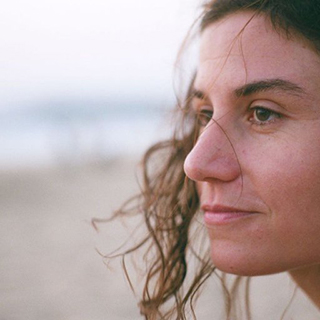
Complexity of the biotechnological environment we are part of is difficult to comprehend. Understanding art as an endless exercise in perception can help us not only to understand but also to feel, experience and collaborate in the entangled networks that sustain us.
The artistic practice of Sasa Spacal researches how signals such as the sound of symbiosis, the vibrations of mushrooms, the smell of antibiotics and microbiologically enriched air help us to map out our position in networks and to become aware of the multiplicity of feedback loops through which interspecies communication is enacted. Once we step down from the anthropocentric throne, non-human actors such as bacteria, fungi, and plants can teach us about diverse ways of connecting, not as our opposite, but as part of us and as collaborators in biogeochemical processes. Dualisms such as natural and artificial, virtual and material, technological and ecological intertwine into opaque biotechnological multiplicities of planetary dimensions, which humanity is trying to understand by developing models that are more or less useful. Perhaps in times of anthropogenic crisis, it would be wise to ask how empathic practices of caring collaboration can be developed through the models, theories, cartographies and stories we create.
Bio
Saša Spačal is a postmedia artist working at the intersection of living systems research, contemporary and sound art. Her artistic research focuses on entanglements of environment-culture continuum and planetary metabolism. By developing technological interfaces and relations with organic and mineral soil agents, she tries to address the posthuman condition that involves mechanical, digital and organic logic within biopolitics and necropolitics of our times.
Her work was exhibited and performed at venues and festivals, such as Ars Electronica Festival (AT), Prix Cube Exhibition (FR), Transmediale Festival (DE), Athens Digital Arts Festival (GR), Perm Museum of Contemporary Art (RUS), Onassis Cultural Center Athens (GR), Chronos Art Center (CHN), Cynetart Festival (DE), National Art Museum of China (CHN), Museum of Contemporary Art Metelkova (SI), Kapelica Gallery (SI), Device_art (CRO), Art Laboratory Berlin (DE), Museum and Galleries of Ljubljana (SI), Museum of Contemporary Art Vojvodina (SRB), Mediamatic (NL) and Lisboa Soa Festival (PT). For her work she received Prix Ars Electronica honorary mention, Japan Media Art Award jury selection, Prix Cube nomination, New Technology Art Award nomination and was longlisted for New Aesthetica Prize.
For more information about the MAT Seminar Series, go to: seminar.mat.ucsb.edu.
Speaker: Ralf Baecker
Monday, March 1st, 2021 at 1pm via Zoom.
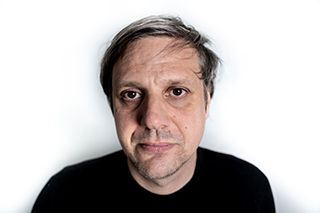
Bio
Ralf Baecker (*1977 Düsseldorf, Germany) is an artist working at the interface of art, science, and technology. Through installations and machines, Baecker explores the fundamental mechanisms of new media and technology. In his representations and spatializations of digital and technological processes, he offers a poetic sight behind the surfaces of contemporary image-making. At the core of his objects lies the entanglement of the virtual with the real, or rather, with the world. With a media-archaeological outlook, Ralf Baecker digs within obsolete devices for traces of functions and (power) structures that are still detectable in technologies today. His work seeks to form a hybrid between contemporary digital methodologies and a material-oriented artistic practice. As a result, he understands technology not as a tool but rather as an epistemological instrument to pose fundamental questions about a world perceived through technological impressions.
Baecker has been awarded multiple prizes and grants for his artistic work, including the grand prize of the Japan Media Art Festival in 2017, an honorary mention at the Prix Ars Electronica in 2012 and 2014, the second prize at the VIDA 14.0 Art & Artificial Life Award in Madrid, a working grant of the Stiftung Kunstfond Bonn, the Stiftung Niedersachsen work stipend for Media Art 2010 and the stipend of the Graduate School for the Arts from the University of the Arts in Berlin and the Einstein Foundation.
His work has been presented in international festivals and exhibitions, such as the International Triennial of New Media Art 2014 in Beijing, Künstlerhaus Wien, ZKM | Center for Art and New Media in Karlsruhe, Martin-Gropius-Bau in Berlin, WINZAVOD Center for Contemporary Art in Moscow, Laboral Centro de Arte in Gijón, Centre de Cultura Contemporània de Barcelona (CCCB), NTT InterCommunication Center in Tokyo, Kasseler Kunstverein and Malmö Konsthall.
Since 2016 he teaches at the University of the Arts Bremen as Professor for Experimental Design of New Technologies in the Digital Media program.
For more information about the MAT Seminar Series, go to: seminar.mat.ucsb.edu.
Thursday, February 25th, 2021
1pm PST via Zoom
Abstract
Embodied worldmaking explores the transdisciplinary creative intersection of embodied movement practice, known in the field of somatics, with virtual worldmaking performance and media arts practice. This research integrates diverse methods into a framework for creating immersive media performative artworks inspired from the body and the natural world that aim to create spaces of refuge for re-connecting to the whole body and sharing embodied stories of interconnectivity with land. This framework takes the form of the embodied worldmaking process, a set of integration methods prioritizing the body in relationship with creative expression, media arts practice, and interactive technology. Specific methods are shared for connecting embodied movement practice, embodied interaction design, performative virtual worldmaking practice, and creative coding system design.
This practice-based arts research is conducted through the iterated processes of creating poetic virtual worlds and instruments inspired by living ecologies, designing interaction mappings between whole-body sensing systems and virtual ecosystems, and exploring improvisational performance and embodiment practices within these systems. This performance research practice provides the grounding motivation for designing the creative coding system, seer, and the four integrative media artworks of this dissertation.
The audiovisual creative coding system, seer, was created to empower the process of embodied worldmaking. Autobiographical design methods were used to grow the expressivity of the system to support the media artworks of this dissertation. The system enables expressive and rapid production of instruments and virtual ecologies intended for use in immersive installations and improvisational performance environments. Seer provides useful tools for designing audiovisual worlds for performance, as well as new methods for the iterative design of full-body interaction mappings and composition.
Speaker: Danielle Siembieda
Monday, February 22nd, 2021 at 1pm via Zoom.
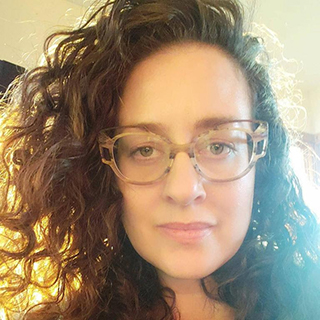
Leonardo/The International Society for the Arts, Sciences, and Technology (Leonardo/ISAST) is an enterprise think tank that leverages hybrid, creative inquiry, and practice to build a better world. This lecture will focus on its full-cycle creative engine centered around impact through creative community and experimental publishing. Provoking questions such as how do we create a method/interface to contextually understand communities' needs/interests (human and non-human) that is platform agnostic?
Bio
Danielle Siembieda is a bold strategist on transdisciplinary programs, STEAM, and creative technology, With Leonardo/ISAST she develops collaborative explorations through partnership-driven creative programs and initiatives. She leads Leonardo's creative vision including the Leonardo Residency Platform, brand and communications and special projects. In her global partnership portfolio, she leads Leonardo's fast-growing LASER Network of cultural community leaders in over 45 cities world-wide bridging the language, culture, and discipline divide. She also fosters global scientific and artistic literacy through promotional leadership of Leonardo Music Journal and Leonardo journal, which has become the leading peer-reviewed publication of 50 years in art, science, and technology research.
Siembieda brings over 15 years of leadership experience in community development and strategic communications. She has served on the board of the Women Eco Art Dialogue, an organization founded on the mission to share art at the edge of social justice and the environment. She has been a leader and fellow at Emerging Arts Professionals where she received a MADE grant and was nominated for the Ebony McKinney Leadership award. She was the Community Engagement Manager for ZERO1: The Art & Technology Network where she designed and developed communities around art and technology through the App Lab and Art Ambassador Program; the Co-Project Manager of the San Jose Climate Clock Initiative, an ideas competition for green public art with the City of San Jose, San Jose State University, Montalvo Arts Center and ZERO1; the Managing Editor of SWITCH, the online Journal of New Media (no longer in publication); and a member of the San Jose Public Art Advisory Committee.
As an Alter Eco-Artist based in the San Francisco Bay Area Siembieda works at the intersection of community, emerging technologies, and the environment. She is also an artist in residence at the University of Santa Cruz Genomics Institute home of the Genome Browser through UCSC's Arts Research Open Lab. Siembieda has an MFA in Digital Media Art at San Jose State University at the CADRE Laboratory for New Media with a focus on green technology and sustainable materials. As the founder of Art Inspector: Saving the Earth by Changing Art, Siembieda has turned this social practice project into a business, acquiring funding from Silicon Valley Energy Watch and working with the City of San Francisco Department of Environment to help artists work healthier and safer. She defines her art at “Alter-Eco Art” bridging Eco-Art practice and New Media at the intersection of environment, technology, and community. Her work has been presented globally including the 01SJ Biennial in the heart of Silicon Valley, the National Gallery in Copenhagen and the Education Center of the National Hermitage in Saint Petersburg, Russia.
For more information about the MAT Seminar Series, go to: seminar.mat.ucsb.edu.
Speaker: Maria Yablonina
Monday, February 8th, 2021 at 1pm via Zoom.
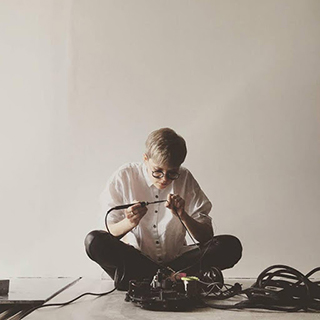
Today the discourse of digital fabrication in the context of architectural research is dominated by the image of an industrial robot arm performing complex movements to produce complex geometry. But what happens when we move beyond appropriation of available hardware towards architecture-specific machines and devices?
Envisioning an entire ecology of machine species designed specifically to manipulate material at an architectural scale opens up a conversation about the role of robotic creatures in architecture beyond construction. A smaller fabrication machine capable of navigating an existing architectural space and safely operating next to a human implies that a fabrication process can be executed on site, and more importantly does not have to be finite, venturing into the topics of adaptive and reconfigurable spaces.
Bio
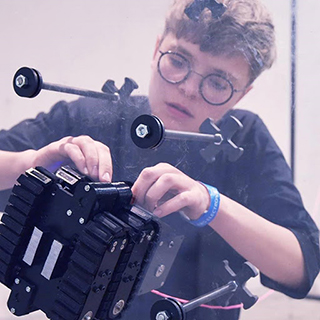
Maria Yablonina is an architect, researcher, and artist working in the field of computational design and digital fabrication. Her work lies at the intersection of architecture and robotics, producing spaces and robotic systems that can construct themselves and change in real-time. Such architectural productions include the development of hardware and software solutions, as well as complementing architectural and material systems in order to offer new design spaces.
Maria’s practice focuses on designing machines that make architecture — a practice that she broadly describes as Designing [with] Machines (D[w]M). D[w]M aims to investigate and establish design methodologies that consider robotic hardware development as part of the overall design process and its output. Through this work, Maria argues for a design practice that moves beyond the design of objects towards the design of technologies and processes that enable new ways of both creating and interacting with architectural spaces.
Maria has been commissioned and exhibited by institutions including Milan Design Week, Ars Electronica (Linz), Kapelica Gallery (Ljubljana), the Cooper Union, and the Moscow Institute of Architecture. She has also collaborated internationally on research with both universities and companies, including Autodesk Pier 9 (San Francisco), ETH Zurich, WeWork (New York), and the Bartlett School of Architecture (London).
For more information about the MAT Seminar Series, go to: seminar.mat.ucsb.edu.
Speaker: Daniel Canogar
Monday, February 1st, 2021 at 1pm via Zoom.
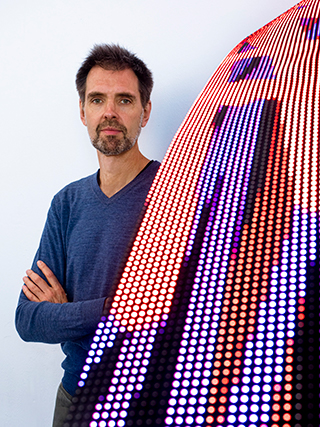
Memory, and its loss, are a central theme in my artwork. Unless we remember, we are condemned to an amnesiac present, texture-less and flat, lacking the perspective of time.
My Small Data series tackles such issues in different ways. I have scoured junkyards, recycling centers and flea markets, looking for examples of aging technologies that defined our existence in the not-so-distant past. What we throw away holds an accurate portrait of who we were. VHS tapes, 35 mm film, hard discs, CDs, to name just a few obsolete mediums that I have used in my art, are all depositories of our memories. When tossing them out, we are also discarding an important part of ourselves. By projecting video animations onto old media, I attempt to reignite life back into them so as to reveal the shared memory they hold within. More recent projects have ventured into big data, and the implications of ever- expanding and constantly mutating digital archives. My algorithmic data murals are large-scale abstract projections that react in real time to different data sets, including financial transactions, online sales, trending internet search queries and breaking news events. These data murals attempt to capture the ceaseless flow of information, seeking out internal rhythms and repeating patterns that result in hypnotic compositions. In the last 15 years, cloud-based archives have profoundly altered how we create, consume and distribute knowledge. They have also left in their wake the ruins of material-based technologies previously used to store information. My artwork is an attempt to understand how our identities, our memories and our sense of self are being profoundly affected by these rapid technological changes.
Bio
Born in Madrid (1964) to a Spanish father and an American mother, Daniel Canogar´s life and career have bridged between Spain and the U.S. Photography was his earliest medium of choice, receiving a M.A. from NYU at the International Center of photography in 1990, but he soon became interested in the possibilities of the projected image and media art. He has created permanent public art installations with LED screens, including Aqueous at The Sobrato Organization (Mountain View, CA, 2019); Pulse, at Zachry Engineering Education Complex in Texas A&M University (College Station, TX, 2018), Tendril for Tampa International Airport (Tampa, FL, 2017) and Cannula, Xylem and Gust II at BBVA Bank Headquarters (Madrid, 2018). He has also created public monumental artworks in different mediums such as Amalgama El Prado, a generative video-projection projected on the Museo Nacional del Prado façade and created with the Museum’s painting collection (Madrid, 2019); Constellations, the largest photo-mosaic in Europe created for two pedestrian bridges over the Manzanares River, in MRío Park (Madrid, 2010) and Asalto, a series of video-projections presented on various emblematic monuments, including the Arcos de Lapa (Rio de Janeiro, 2009), the Puerta de Alcalá (Madrid, 2009) and the church of San Pietro in Montorio (Rome, 2009). Also part of the series is Storming Times Square, screened on 47 of the LED billboards in Times Square (New York, NY, 2014). His solo shows include "Billow" at bitforms gallery (New York, NY, 2020); "Liquid Memories" at sala Kubo-Kutxa (San Sebastian, 2019); Surge a temporary installation for the Grand Lobby Wall at Moss Arts Center, Virginia Tech (Blacksburg, VA, 2019); "Echo" at Paul and Lulu Hilliard University Art Museum (Lafayette, LA, 2019); "Melting the Solids" at Wilde Gallery (Geneva, 2018); “Fluctuations” at Sala Alcalá 31 (Madrid, 2017); "Echo" at bitforms gallery (New York, NY, 2017) and Max Estrella Gallery (Madrid, 2017); "Sikka Ingentium" at Museum Universidad de Navarra (Pamplona, Spain, 2017); “Quadratura” at Espacio Fundación Telefónica (Lima, 2014); "Vórtices" at the Fundación Canal Isabel II (Madrid, 2011); Synaptic Passage, an installation commissioned for the exhibition "Brain: The Inside Story" at the American Museum of Natural History (New York, NY, 2010) and two installations at the Sundance Film Festival (Park City, UT, 2011).
For more information about the MAT Seminar Series, go to: seminar.mat.ucsb.edu.
Speaker: Oliver Ressler
Monday, January 25th, 2021 at 1pm via Zoom
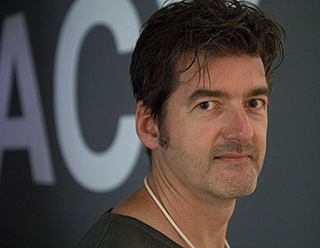
Oliver Ressler is an artist and filmmaker whose work has focused on global warming as a central theme ever since he first began to exhibit. One of his first solo exhibitions was “100 Years of Greenhouse Effect” at Salzburger Kunstverein (1996). Several exhibitions, films, installations, billboards and photographic works on the theme have followed since then.
Oliver Ressler will talk about these works, putting a cycle of films – "Everything's coming together while everything's falling apart" (2016 – 2020) – at the center of the presentation. These films follow the climate justice movement in its struggles to dismantle an economic system heavily dependent on fossil fuels.
In the first film activists contest the UN Climate Change Conference in Paris in 2015, that proved the incapacity of governments to commit themselves to any binding agreement that would curtail global warming. The film on the Ende Gelände action in 2016 shifts the focus to a massive civil disobedience action at the Lusatia lignite coal fields (near Berlin), where 4,000 activists entered an open-cast mine. The film on the ZAD focuses on Europe’s largest autonomous territory that emerged from the struggle against the new airport of Nantes in France. The film about Code Rood highlights a civil disobedience action in the port of Amsterdam in June 2017, Europe’s second-largest coal port. The film on Limity jsme my leads us into the blockade of Bílina coal mine in Czech Republic and the detainment of the activists. The sixth film celebrates the Venice Climate Camp; 200 activists forced their way into the Venice Film Festival enclosure, where they occupied the red carpet for nine hours.
Three of the films:
Everything's coming together while everything's falling apart: Code Rood: https://youtu.be/skz3qVMEtHY.
Everything's coming together while everything's falling apart: The ZAD: https://youtu.be/Quehf2OMUbo.
Everything's coming together while everything's falling apart: COP21: https://youtu.be/_HWOXeP5pA8.
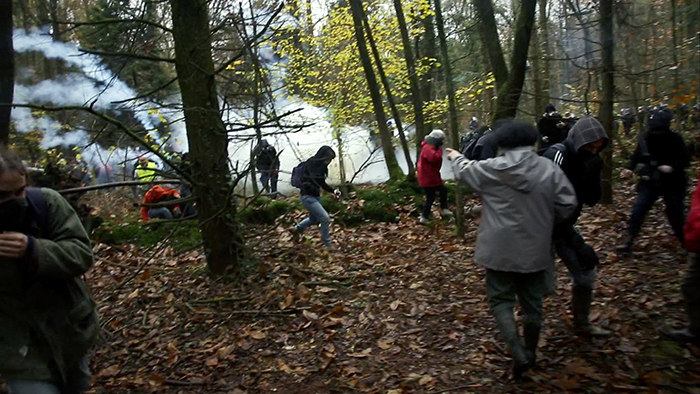
Bio
Oliver Ressler lives and works in Vienna/Austria. He produces installations, projects in public space, and films on issues such as economics, democracy, migration, the climate catastrophe, forms of resistance and social alternatives. He has had comprehensive solo exhibitions at Centro Andaluz de Arte Contemporaneo – CAAC, Seville; Wyspa Institute of Art, Gdansk; Lentos Kunstmuseum, Linz; MNAC – National Museum of Contemporary Art, Bucharest and SALT Galata, Istanbul. Ressler has participated in more than 400 group exhibitions, including Museo Reina Sofía, Madrid; Centre Pompidou, Paris; Van Abbe Museum, Eindhoven; MASSMoCA, North Adams, USA; the biennials in Prague (2005), Seville (2006), Moscow (2007), Taipei (2008), Lyon (2009), Venice (2013), Quebec (2014), Jeju (2017), Kyiv (2017), Gothenburg (2019), Stavanger (2019), and at Documenta 14, Kassel, 2017 (exhibition organized by EMST). Ressler currently works on “Barricading the Ice Sheets”, a research project on the climate justice movement, funded by the Austrian Science Fund. He was the first prize winner of the Prix Thun for Art and Ethics Award in 2016.
www.instagram.com/oliver.ressler
For more information about the MAT Seminar Series, go to: seminar.mat.ucsb.edu.
Speaker: Daria Parkhomenko
Monday, January 18th, 2021 at 9:30am via Zoom
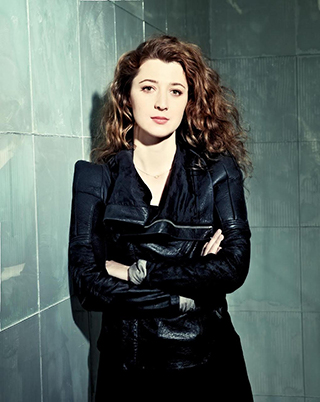
Abstract
Since the early 1960's Russia has its own tradition of scientific-artistic synthesis: in the late Soviet Union technological aesthetics became a safe haven for artists working with abstractions and the heritage of avant-garde. The "Prometei" Center, founded by Bulat Galeev, actively worked in Kazan, kinetic artists (Viacheslav Koleichuk) created their pieces in Moscow and Leningrad, and numerous buildings inspired by bionics, space exploration and modern technologies appeared throughout all over the USSR. Now, in the era of a more self-critical art, artists might take a different view of technology. But the overall interest in science and collaborative work of people from different intellectual cultures is still strong. Russian science-art practitioners are not numerous but distinctive and internationally active. They include ::vtol::, Dmitrii Kawarga, Helena Nikonole from Moscow, "Where the Dogs Run" from Yekaterinburg and Egor Kraft from St. Petersburg.
In 2008 the first independent nonprofit science-art research, exhibition and production centre has been created by the author of the talk. Laboratoria Art&Science Foundation specializes on building common ground between artists and scientific collectives where technological artworks are created through the interaction of diverse intellectual cultures on equal terms. Over more than a decade of practical experience, Laboratoria has developed a methodology for the interaction of four main participants: artists, scientists, engineers and curators in order to maintain a mutual flow of ideas. Three main methods of this methodology are Immersion, Transposition and Third-order Observation. These methods will be demonstrated on several recent examples of technological artworks produced by Laboratoria in collaboration with leading neuroscientists and deep learning researchers, resulted in the exhibition "Daemons in the Machine" (ММОМА, Moscow, 2018) devoted to re-thinking of AI technologies and its possible interplay with society and culture.
Bio
Daria Parkhomenko is the founding director and curator of LABORATORIA Art&Science Foundation, founded in 2008 as the first exhibition and research centre in Russia focused on the platforms of interdisciplinary interaction between contemporary art and science.
Parkhomenko graduated from Lomonosov Moscow State University in sociology and received her MA in art and cultural management at Moscow School of Social and Economic Sciences. She teaches Methodology and Practice of Science-Art at the Higher British School of Design (Moscow), and at the School of Contemporary Art MMOMA (Moscow), and at Saint Petersburg National Research University of Information, Technologies, Mechanics and Optics (ITMO, St. Petersburg). Collaborating with these and other institutions, she has organized numerous conferences, symposiums and talks on the topic of technological art and its prospects. She has also contributed as an author to a number of publications both in Russia and abroad and foreign editions, including: Open Codes, ZKM, 2019; The Art Magazine, Moscow, 2013; Digital art conservation, ZKM, Germany, 2012; Synergia, Arts Santa Monica, Barcellona, 2012; CyberArts 2011, Ars Electronica, 2011 ect.
Parkhomenko’s scientific interests, as reflected in her curatorial projects, include quantum physics, AI, neuroscience, alternative energy, climate change, and space. She has curated more than 30 exhibitions, among them: "Daemons in the Machine" group exh. (ММОМА, Moscow, 2018), "Quantum Entanglement 2.0" group exh. (Arsenal, Nizhny Novgorod, 2016), "Quantum Entanglement" (with Tom Higham, FutureEverything) group exh. (LABORATORIA, Moscow, 2015), "Superconduction" group exh. (Riga, 2015), "Ice Laboratory", group exh. (LABORATORIA, Moscow, 2013), International symposium "Brainstorms. "The Artist in the Context of Neuroscience" (Polytechnic Museum, Moscow, 2012), "Neuroscientific experiment 1. Measuring the Magic of Mutual Gaze", Marina Abramovic (Garage, Moscow, 2011), "Infusion", group exh. (LABORATORIA, Moscow, 2011), "Tele-Present Wind", David Bowen (LABORATORIA, 2010).
She served as a jury member at Ars Electronica Festival (Linz, Austria) in Hybrid art nomination (2011), a laureate of the Public Prize "Cariatida" (2014) and a member of the expert board of the All-Russian competition for the award in the field of contemporary visual art "Innovation" (2015, 2016).
For more information about the MAT Seminar Series, go to: seminar.mat.ucsb.edu.
Speaker: Andy Gracie
Monday, January 11th, 2021 at 1pm via Zoom
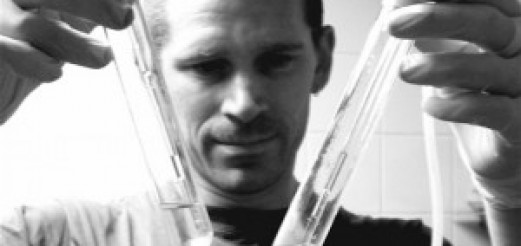
Abstract
This talk will discuss Andy Gracie's work and the way it has explored various strategies for what the Universe means to us, the significance and fragility of our existence within it, and how it will all end. This trajectory will begin with a series of works that performed astrobiological experiments, pass through intangible cosmic artefacts, briefly visit the aftermath of existential threats, and end with the end of the universe. In and around these destinations will be discussions of the social contract of disaster art in the current global situation and how artists can explore strategies for engaging with scientific institutions. The talk should last around 40 minutes and will invite discussion.
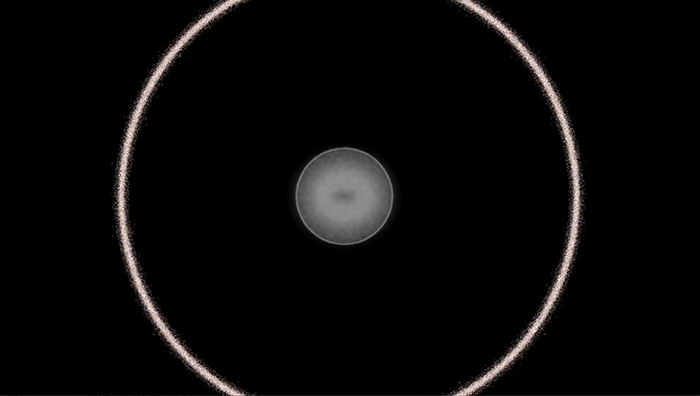
Bio
Andy Gracie works across various disciplines including installation, robotics, sound, video and biological practice. This work is situated at a point of separation between the arts and the sciences, creating situations of exchange which allow new understandings and knowledge systems to develop. Much of his work involves reactions to and engagements with the science of astrobiology and other forms of space research. He looks at space as a nonhuman and unfeeling environment, balancing wonder with awe and fear. His practice employs scientific theory and practice to question our relationships with exploration and experiment whilst simultaneously bringing into focus the very relationship between art and science, and how new knowledge is culturally assimilated. Much of the work also features an ongoing engagement with semiotics, simulation theory and apocalyptic scenarios.
His work has been exhibited widely and internationally in both solo and group shows and has included several special commissions for new works. He presents regularly at conferences and seminars across the globe and has published a number of articles and papers. His work has also been featured in books by Stephen Wilson, Linda Weintraub, William Myers, Maria-Antonia Gonzalez and Dmitry Bulatov.
His large scale installation 'Autoinducer_ph-1' has received honourable mentions from VIDA and Ars Electronica in 2007. The ongoing project 'Drosophila titanus' received an honorary mention from Ars Electronica in 2015.
Alongside his artistic practice he has co-founded the open art/science initiative Hackteria, an international network of artists and practitioners with a strong educational presence. He has co-produced, hosted and curated numerous exhibitions, workshop programs and art/science crossover events internationally.
Between 1999 and 2007 he worked at the University of Huddersfield as visiting lecturer, and later as course leader of the MA in Smart and Digital Design.
He is currently involved in a long term collaboration/residency with the School of Planetary Sciences at the Open University of Milton Keynes in the United Kingdom and the Institute of Cosmic Sciences at the University of Barcelona.
For more information about the MAT Seminar Series, go to: seminar.mat.ucsb.edu.